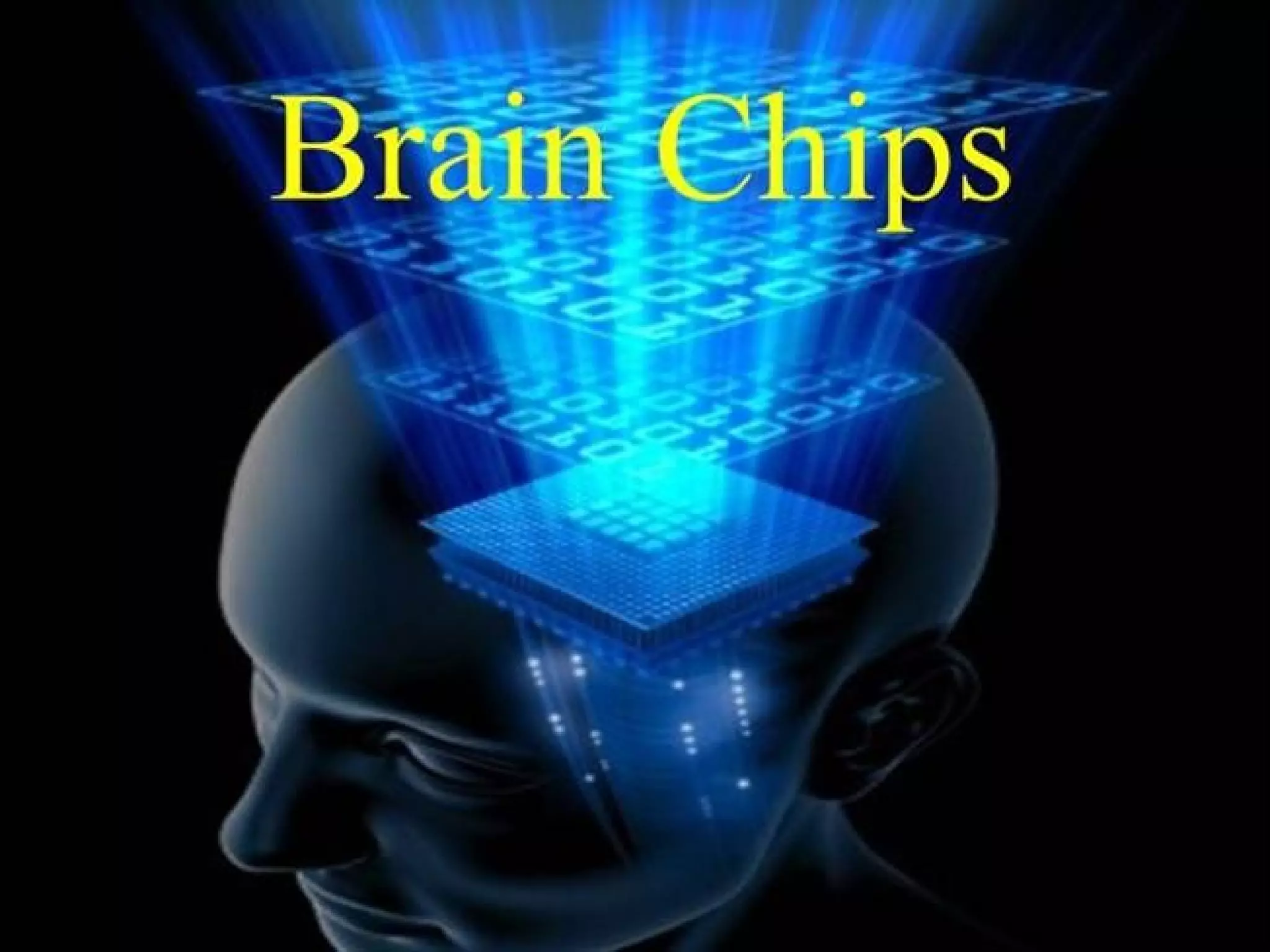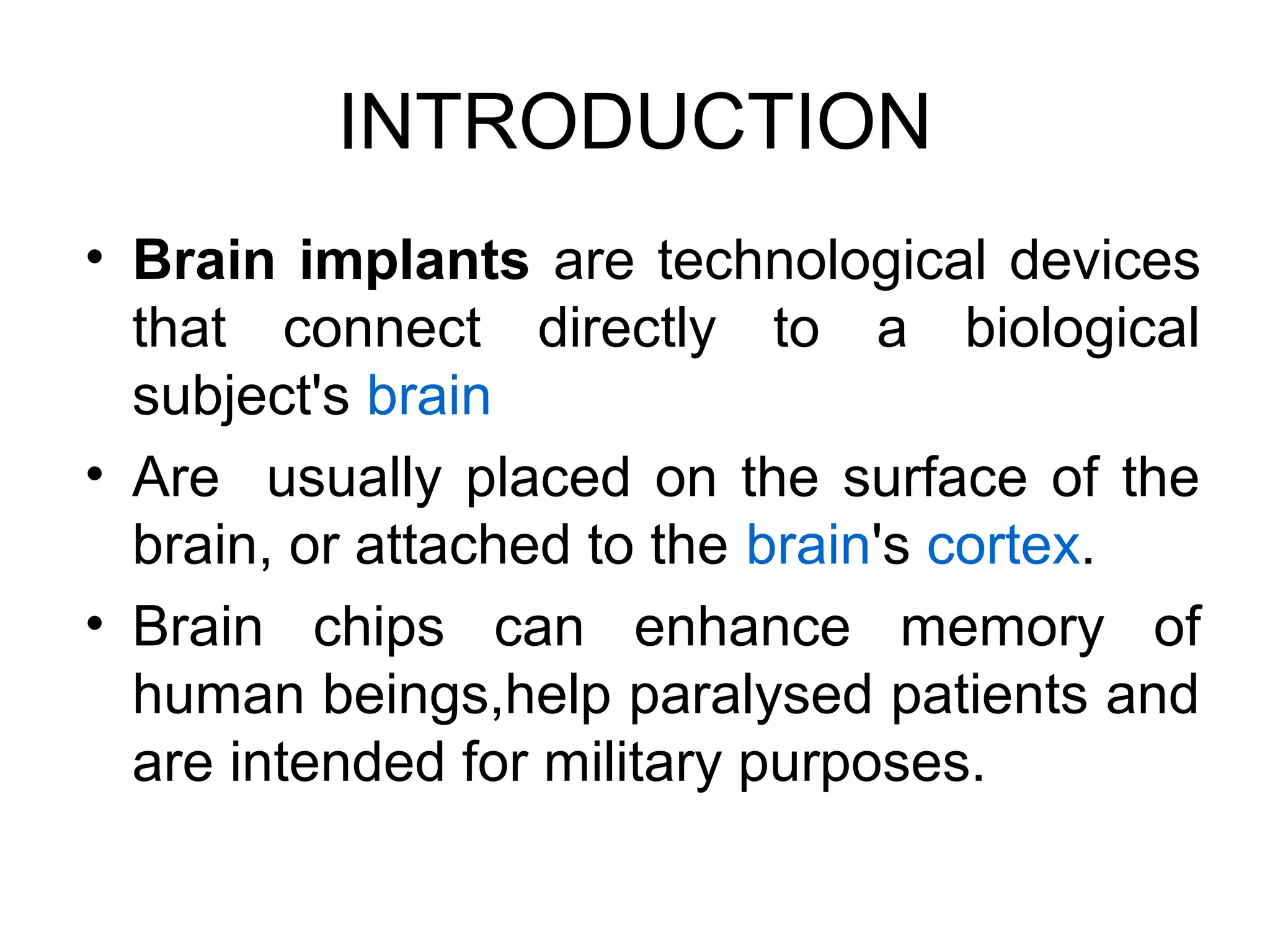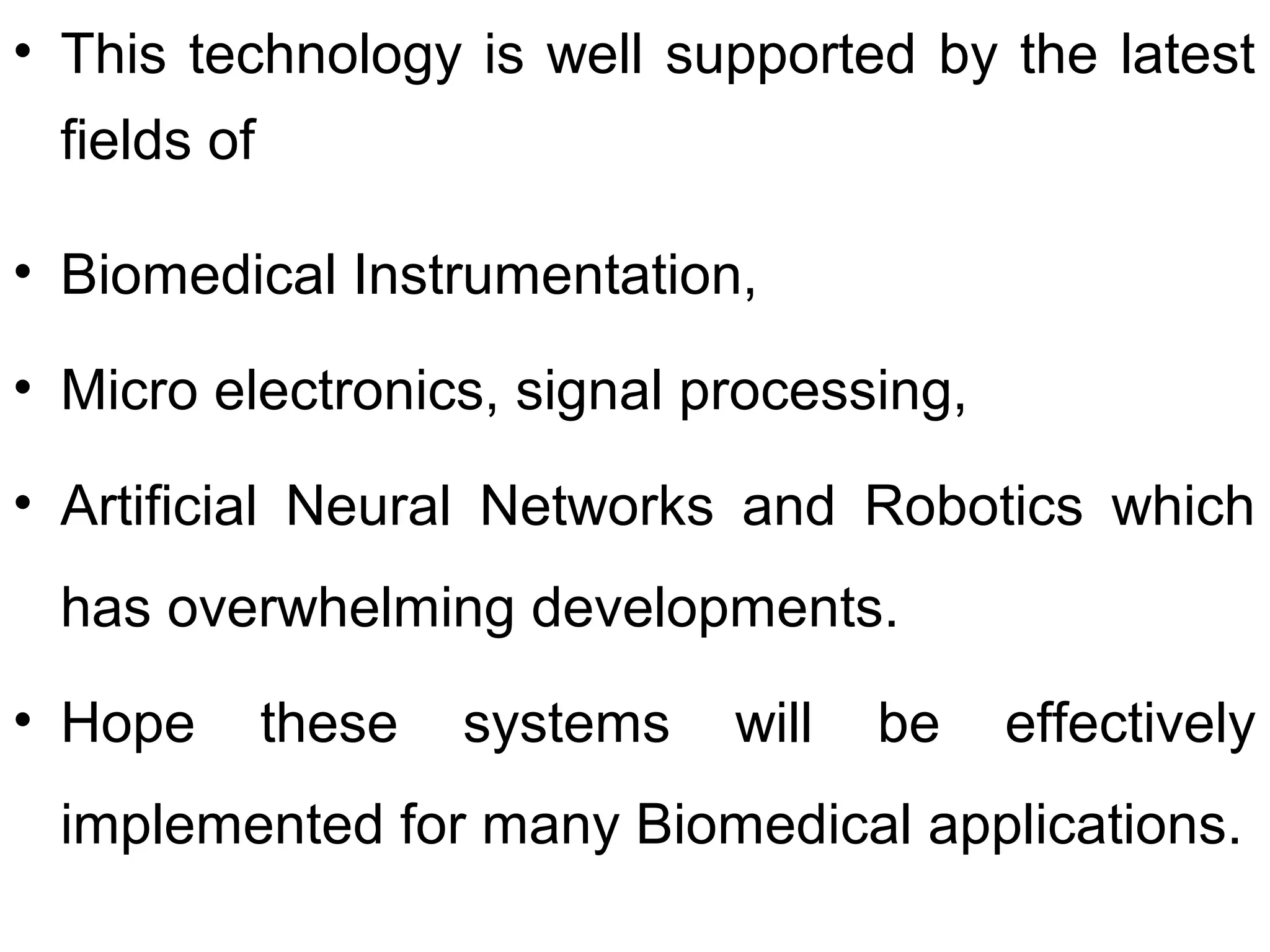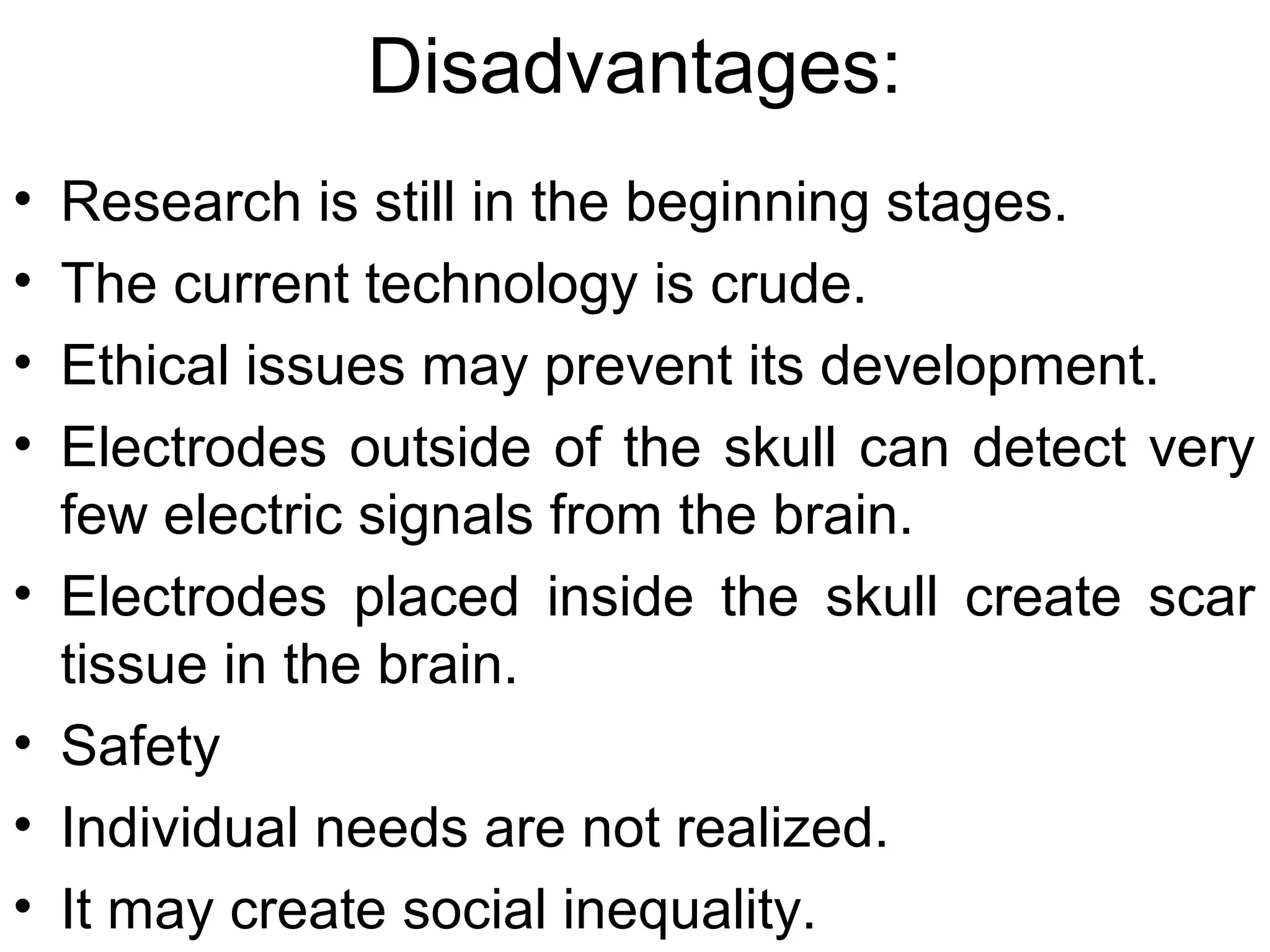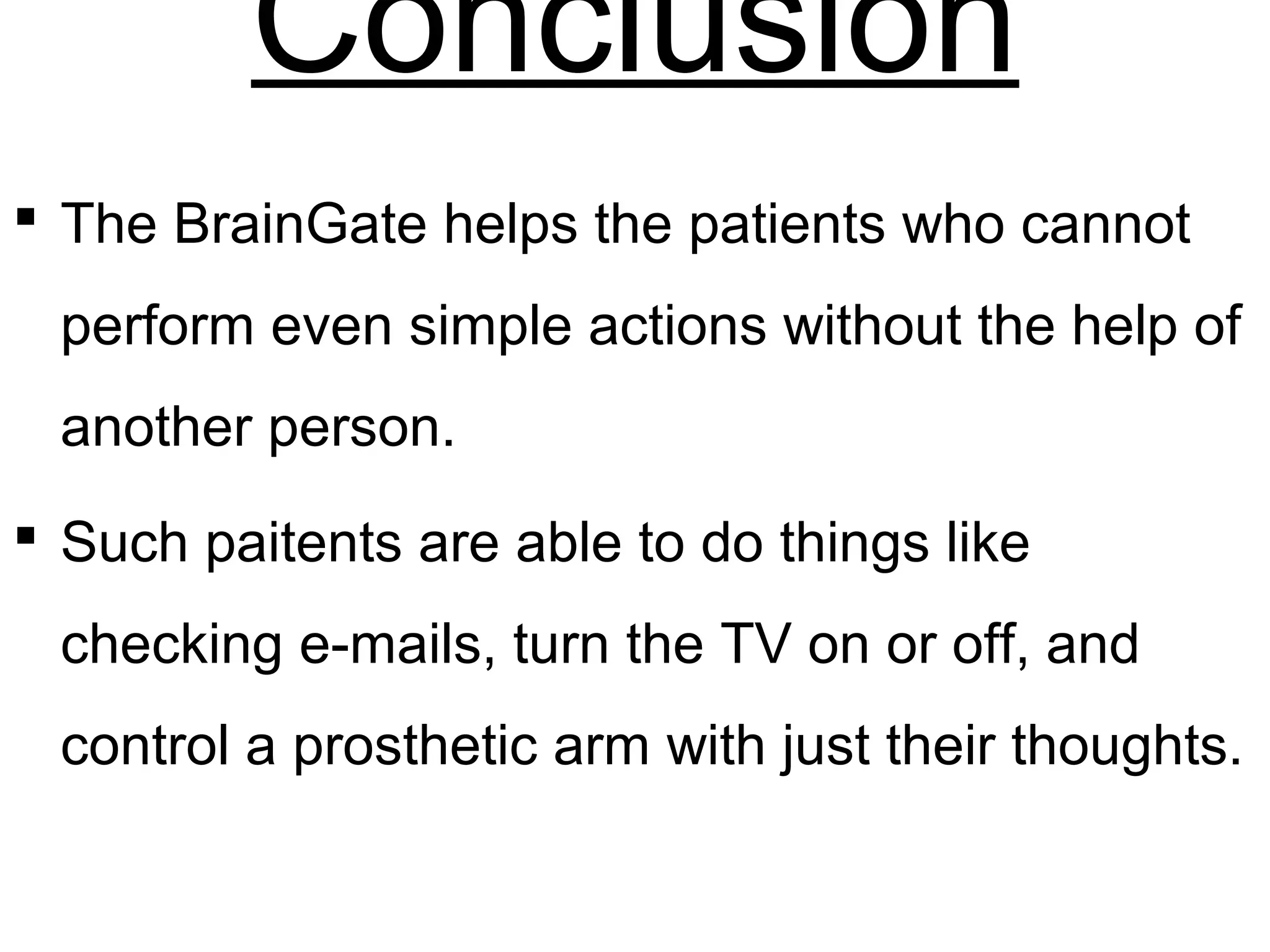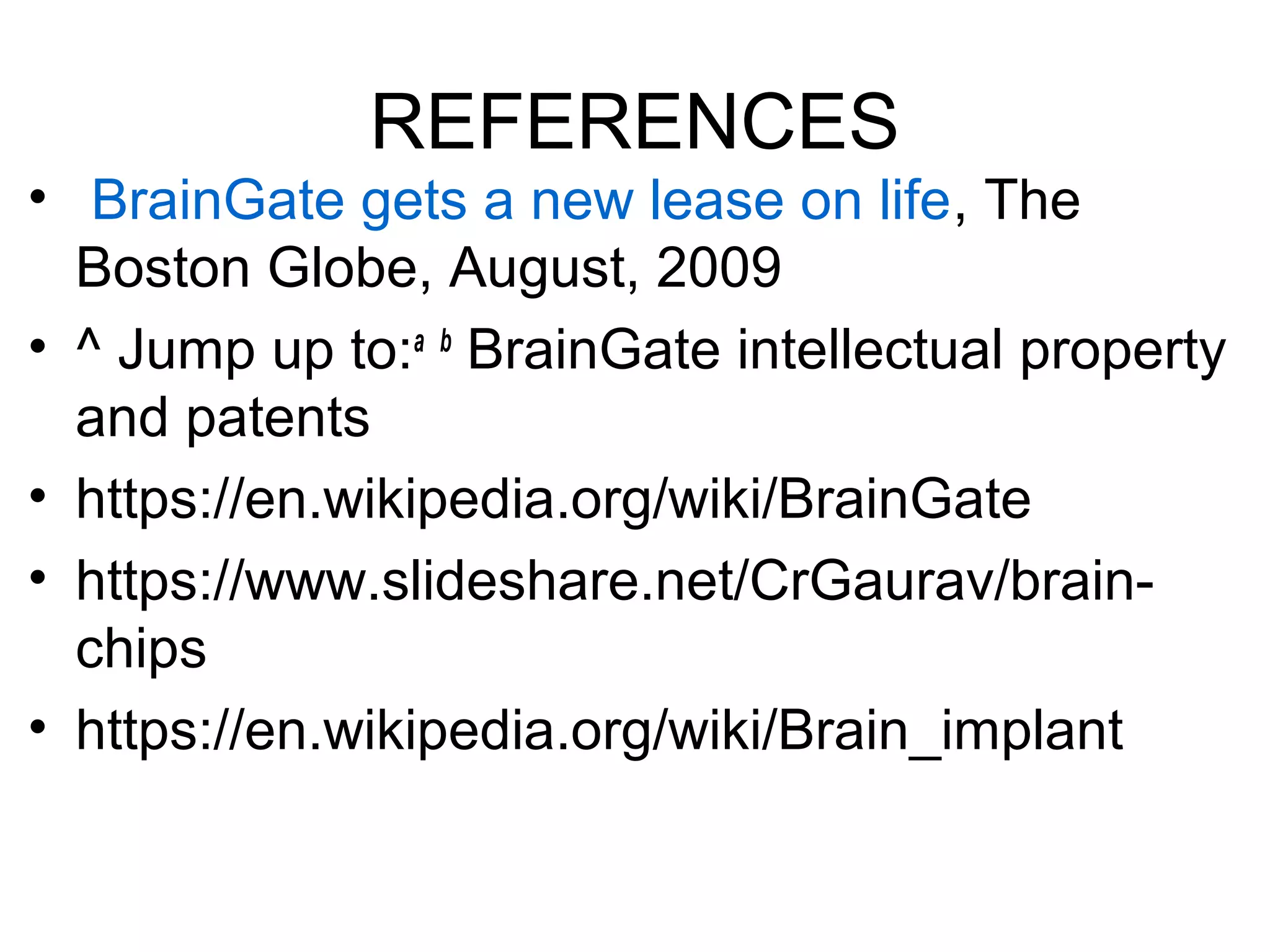Shivam Chaddha gave a presentation on brain chips. The presentation covered the evolution of brain chips from early experiments in the 1950s to implantable devices today. It discussed technologies like BrainGate that allow paralyzed patients to control prosthetics and computers using only their thoughts. While promising benefits, brain chips also face challenges from technical limitations and safety/ethical concerns that scientists continue working to address. The presentation concluded that brain chip technology has helped patients but does not promise miracles and more research is still needed.

